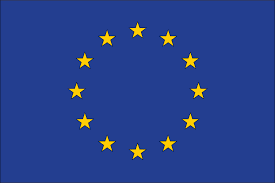Chemycal has been acquired by 3E
Learn MoreChemycal has been acquired by 3E
Learn MoreDiscover how Chemycal PRO helps you boosting your regulatory monitoring:

Today, the Commission proposed a revised Regulation on classification, labelling and packaging of chemicals (CLP) and introduced new hazard classes for endocrine disruptors and other harmful chemical substances to better protect people and the environment from hazardous chemicals.
The revised Regulation clarifies rules on labelling and for chemicals sold online. This will hence facilitate business, including for SMEs, and the free movement of substances and mixtures at EU level.
The Commission adopted a Delegated Act to introduce new hazard classes under the CLP for endocrine disruptors, as well as for chemicals that do not break down in the environment and can accumulate in living organisms, or risk entering and spreading across the water cycle, including drinking water.
The new hazard classes are the result of extensive scientific discussions and will provide easier access to information to all users of such chemicals, notably consumers, workers and businesses. They could allow further action to address and mitigate the risks of substances and mixtures under other EU downstream legislation such as e.g. REACH, while taking account of socio-economic impacts.
In addition, the legislative proposal amending the CLP Regulation caters for:
The CLP revision will increase protection of human health and the environment. While companies may need to invest to comply with the new rules, they would benefit from easier access to up-to-date information on chemicals hazards and from simplified labelling rules. SMEs in particular will benefit from the latter.
The CLP revision will foster the transition of European industry, including SMEs, to sustainable chemicals, and support them to become global front-runners for future-proof chemistry. The revision of the CLP, alongside the planned revision of the REACH Regulation, is an important deliverable of the Chemicals Strategy for Sustainability, which is a key building block of the European Green Deal.
Next steps
The Commission proposal amending the CLP Regulation will now be subject to the approval of the European Parliament and Council as part of the ordinary legislative procedure.
The Commission Delegated Act introducing the new hazard classes is expected to enter into force early next year, after scrutiny by the European Parliament and Council.
The EU will chair a new UN informal working group to develop global criteria for the newly adopted hazard classes.
Background
The objective of the CLP Regulation is to ensure a high level of protection of health and the environment, as well as the free movement of substances, mixtures and articles. It requires manufacturers, importers or downstream users of substances or mixtures to classify, label and package their hazardous chemicals appropriately before placing them on the market. The CLP Regulation establishes legally binding hazard identification and classification rules. It sets out common rules on labelling for consumers and workers to enable them to make informed decisions when purchasing or using dangerous products.
CLP provides the basis for many legislative provisions on the risk management of chemicals. CLP determines whether a substance or mixture should be classified and labelled as hazardous. It implements in the EU the United Nations' Globally Harmonised System (GHS).
The EU Chemicals Strategy for Sustainability called for consolidation and simplification of the EU regulatory system with regard to endocrine disruptors, including new hazard classes and criteria for identifying endocrine disruptors in the CLP Regulation to also enable appropriate regulation of these substances including in consumer products.
For more information
Chemicals Strategy for Sustainability
Proposal for a revision of the Regulation on classification, labelling and packaging of chemicals (CLP)
Delegated Act establishing new hazard classes
Questions & Answers on the revision of the CLP
2013 © MyChemicalMonitoring. ALL Rights Reserved. About Us | Terms and Conditions